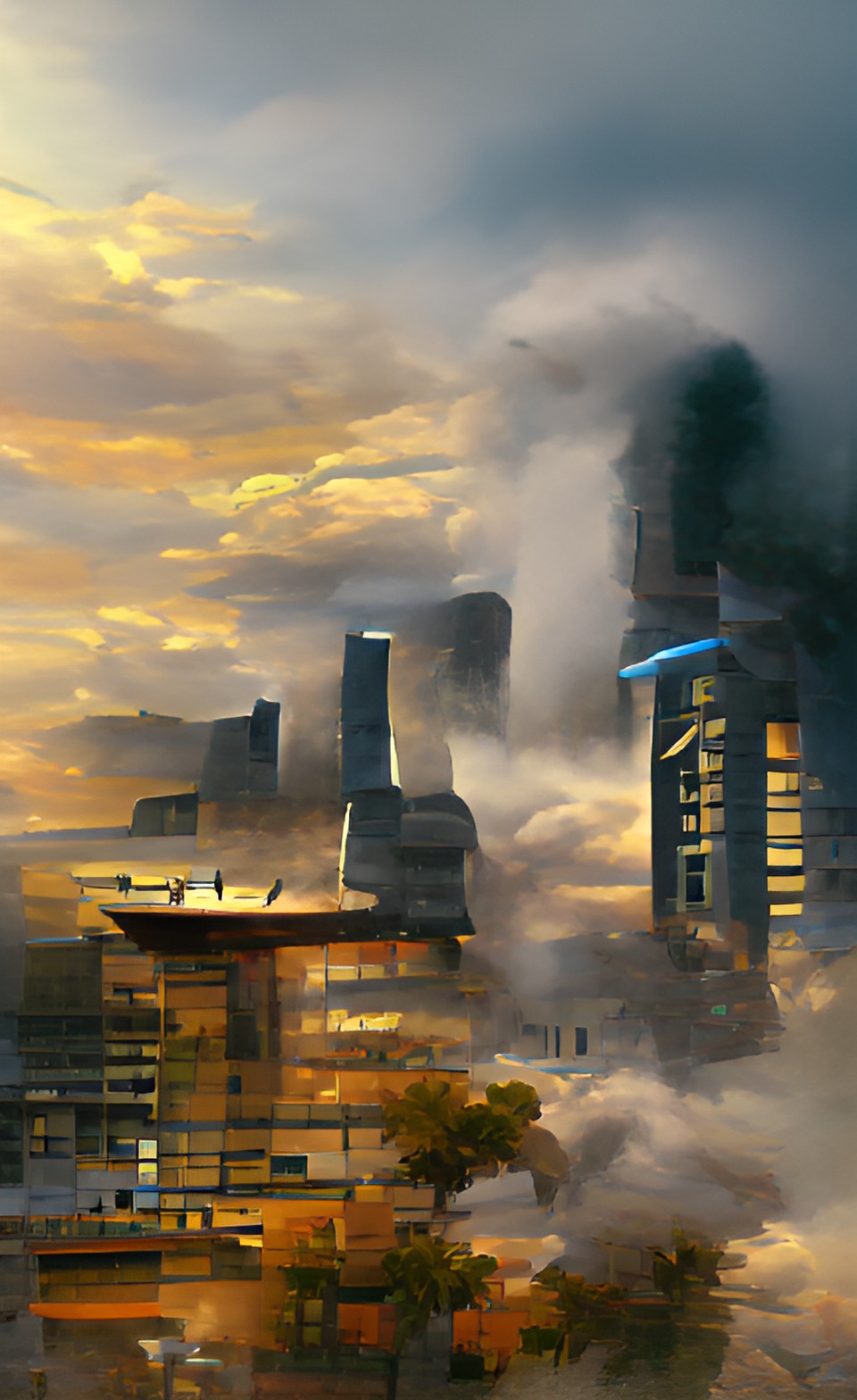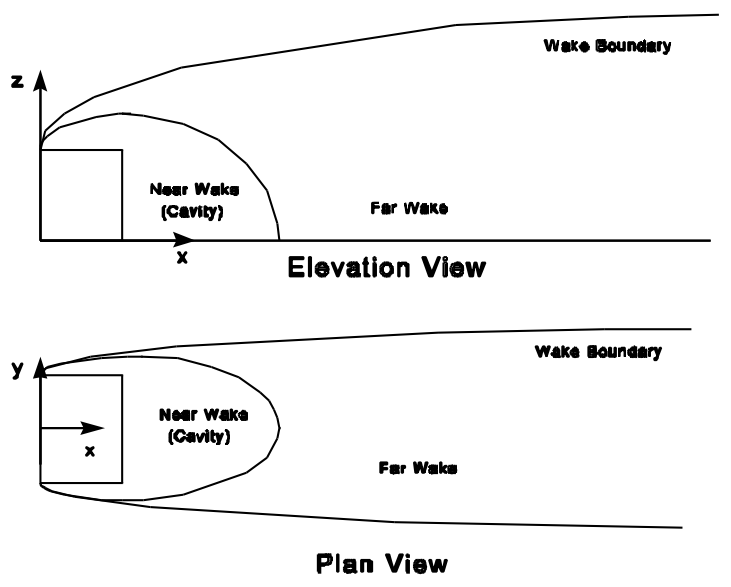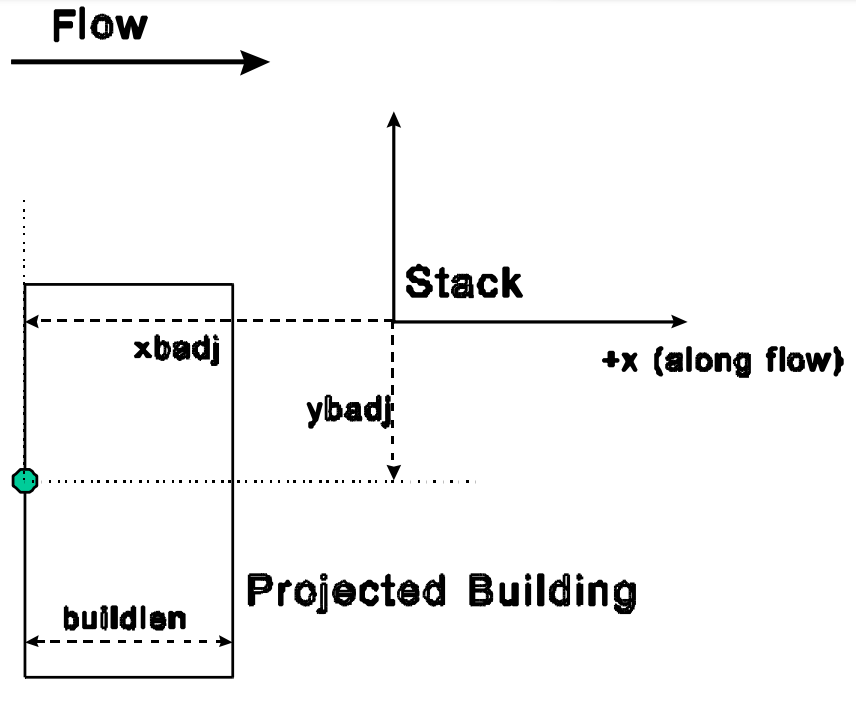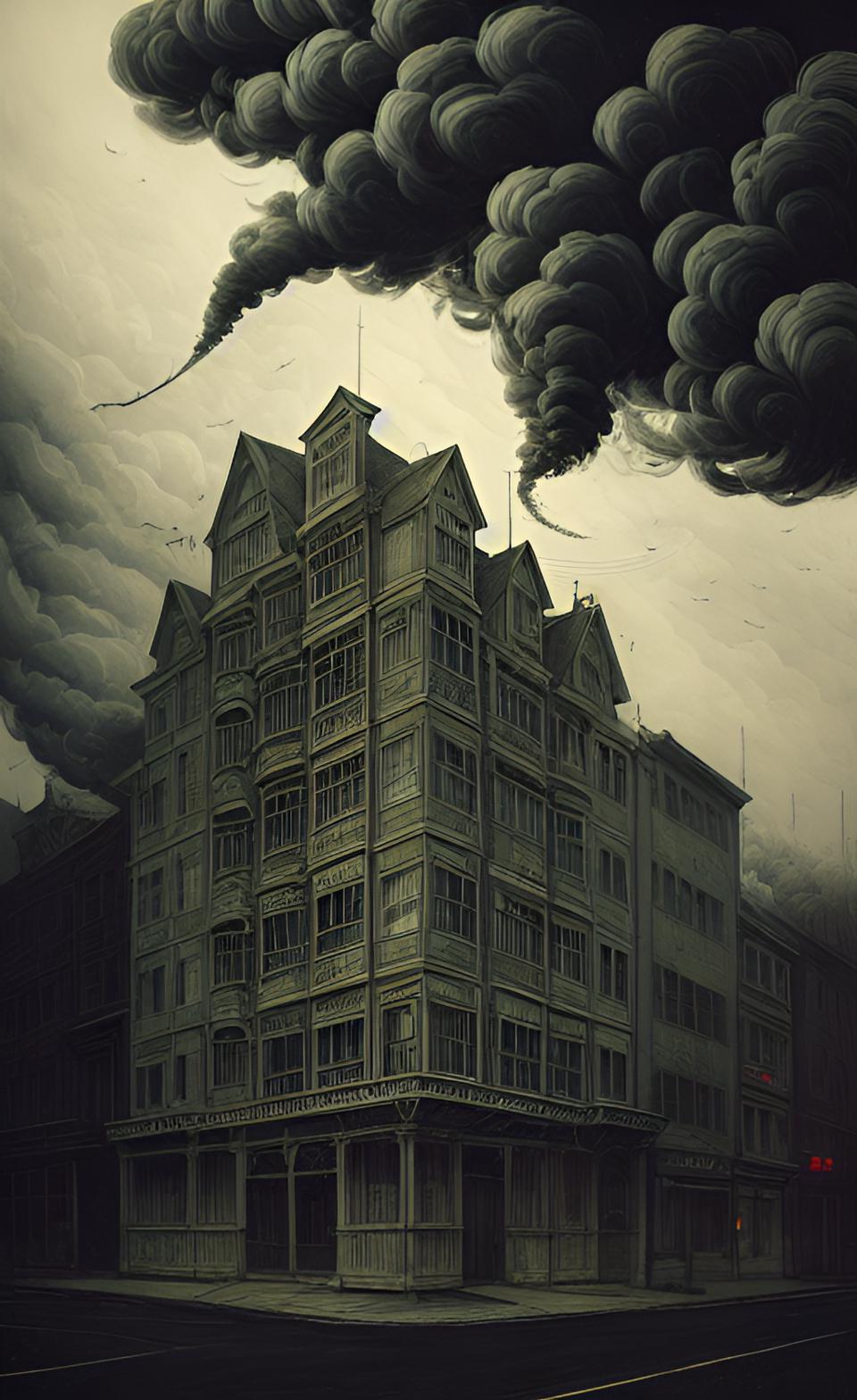BPIP predicts downwash and smoke plumes shaped by buildings
Think of a factory smokestack. The Building Profile Input Program, BPIP, is like a convenient calculator that determines exactly where that smoke goes. The cool part is that it takes the effects of nearby buildings into account. The program knows how the building affects the wind and advises designers to make the smoke bend or rise higher to avoid getting stuck behind it.
BPIP Unleashed: Banish bad air by outsmarting buildings - An industrial stack's plume slinks through urban canyons - until BPIP and PRIME map every twist and turn to keep skies clear and help us make our projects more compliant.
 The science of smoke & building shapes
The science of smoke & building shapesClean air can be predicted better with this information. Considering the building as a big obstacle, the program helps us plan a smooth path for the smoke. To do all this fancy calculating, we feed its output into another program, an air quality model such as AERMOD or CALPUFF. Why might you be concerned?
- Are you prepared to handle air quality in busy areas? This page explains how we predict and manage pollution, especially near factories.
- Do you work in construction or building design? The summary below dives into the science behind building shapes and air flow.
- Are you into cutting-edge science? An environmental modelling system with real-world applications is explored here.
- Are you curious about air pollution regulations? That's how they make sure factories don't choke their neighbors.
- Do you want to impress your friends with your science knowledge? Discover how buildings trap smoke and how scientists beat them!
BPIP had undergone significant development and modification through the 1980's and 90's. This page presents a summary of the landmark document published in 1997. It is entitled Addendum To Isc3 User’s Guide The Prime Plume Rise And Building Downwash Model
It introduces modellers to the new algorithms presented in the latest development at the time, called PRIME and described next.
From Smoky Skies to Clear Answers:
PRIME helps BPIP outsmart buildings and predict pollution
Think about a power plant and its smoke. Especially when there are buildings around, scientists wanted to improve how they predict where smoke goes. To account for these buildings, they created PRIME. PRIME, which stands for Plume Rise Model Enhancements, takes two things into account:
- Smoke swirls: Buildings can make smoke plumes twist and spread like a stirred drink. This is taken into account by PRIME.
- Shorter smoke stacks: Buildings can keep the smoke from rising as high. In PRIME, they take into account how much the building reduces the smoke plume's climb.
 Structure of the wake, from the cavity immediately downwind.
Structure of the wake, from the cavity immediately downwind.The PRIME system can be plugged into existing air quality models to show where pollution goes. It's like getting a software update for how we predict air quality!
There's smoke coming out of a factory chimney now. Smoke can behave strangely when there are buildings nearby. To understand how these buildings affect smoke plumes, scientists use wind tunnels and real-world measurements.
PRIME does this:
- It considers how strong the wind is blowing and how much it swirls around the building, like leaves in a strong breeze.
- It tracks the smoke's exact path and how close it gets to different parts of the building.
- Shape of the building: It looks at how it might block or push smoke.
 pollutant dispersion models
pollutant dispersion modelsPRIME uses this info to calculate how the smoke plume moves and spreads out. It considers the heat and momentum of the smoke plume, but also how the building might force it down. Like a virtual wind tunnel that helps scientists predict where smoke goes!
PRIME uses different zones around the building in its calculations (cavity and far wake), but that's a bit more technical. PRIME helps predict how buildings affect smoke plumes.
Smoke flows like a river. This "smoke river" is affected by the building shape.
- Think of a roof cavity as a pocket of slow-moving air above the roof. The size and location of this pocket are taken into account by PRIME.
- Downwind Cavity: Like the roof pocket, but behind the building. It's length is taken into account by PRIME.
- It's also important to consider the building's overall length.
PRIME can predict how much smoke bends downward after hitting the building with these details. Here's what you need to know:
- A wider building pushes smoke down less steeply than a narrow one (like a wider river flowing more smoothly).
- Longer vs. shorter buildings: A shorter building creates a steeper downward bend for the smoke plume.
This is just a PRIME detail. PRIME uses building features to predict how smoke behaves, which helps us better understand air quality.
A Guide to Plume Rise
PRIME calculates pollution using mass, energy, and momentum rules. It adapts to different weather and wind conditions and includes heat loss effects. This model also considers how the wind changes at different heights, which affects pollution from short stacks. Pollution rises depending on the speed of the wind slowed down by buildings.
Dispersion Coefficients
PRIME calculates how pollution spreads after travelling near a building. As they move away from the building, turbulence and wind slow down. Due to increased turbulence, pollution spreads faster in the wake behind this obstruction.
The model switches to standard dispersion calculations as the turbulence decreases. In certain wind conditions or when the plume is closer to the building, the building's impact on pollution spread is stronger.
Near- and far-wake concentrations
Pollution spreads uniformly in one plane and follows a Gaussian (bell) curve in another. Near the building, some pollution gets caught and mixed around. Based on the height and width of the plume, we calculate the captured portion. From the building's base, this pollution is treated as if re-emitted as a ground-level source. As pollution escapes the near wake, its mass distribution adjusts accordingly.
The BPIP-PRIME model was originally intended for use with ISC3-PRIME, but is compatible with current models such as AERMOD and CALPUFF by following this procedure. Here's the original instructions how to run it with ISC3-PRIME:
ISC3-PRIME uses ISCST3 input files with a few changes. You can input three new variables to describe the building and stack setup. There's only one change: the source pathway. ISCST3 uses PRIME algorithms for stacks, but other sources like open pits don't need PRIME. Here's a sketch of the new variables you need to enter (which BPIPPRM calculates for you):
 building profiles
building profilesBUILDLEN: Building length along wind flow
XBADJ: Distance (downwind or upwind) from the stack to the center of the upwind face of the building
YBADJ: Distance (across) from stack to center of upwind face of building
Each 10-degree flow sector needs a value.
Building Data: Simplified Steps
Now we're setting up a program to see how smoke moves around buildings. It's where you enter information about the buildings. Here's how it works:
- (SO BUILDLEN): You need to specify the building's length along the wind direction.
- Every building gets a unique ID to keep track of it. If there are multiple similar buildings, you can use a range of IDs.
- Distance (Dsbl): Tells the program how far the building is from the smoke source.
- You can optionally give details for up to 36 different wind directions (16 for some versions of the program known as ISCLT). Depending on the wind, you could specify the building height for each direction.
- You can simplify things by entering one value followed by an asterisk and the number of buildings (e.g., 36*34.0 for 36 buildings all 34.0 meters tall). Just a shortcut.
- Make sure everything is correct, especially if you're using a range of source IDs. It should give you some feedback to make sure it understands.
The program needs information on the size, location, and orientation of buildings to understand how they affect smoke movement.
 Smoke behavior and building layout
Smoke behavior and building layoutOlder versions of the BPIP manual mention LOWBOUND but it no longer calculates "lower bound" concentration or deposition values for downwash sources affected by wide buildings in PRIME. This condition isn't recognized by PRIME. The long-term model ISCLT doesn't support PRIME, so don't use these instructions for ISCLT.
The modified BPIP and ISC-PRIME are demonstrated with an example test case. In a DOS window, extract the files from PRIMETST.EXE. You'll find BPIP input and output files, BPIP-PRIME executable, meteorological data, ISC-PRIME input and results files, and ISC-PRIME executable. Building dimensions (in this case) are 75m by 50m by 50m, aligned north-south, with a stack 65m high 10m east of the center of the east wall.
The BPIP input file here has specific information about the building and stack. There's details like the unit type, coordinates, building dimensions, and the height and location of the stack. BPIP input is standardized, and BPIP_PRIME output is based on it. To recap:
- BPIP stands for Building Profile Input Program.
- ISCST3 is the air dispersion model referenced in the example.
- For a facility (Unit 1) with a 65-meter stack, the program calculates Good Engineering Practice (GEP) stack height.
- For modeling, it outputs additional building dimensions and presents them in metres.
Here's an overview
Air Quality Modelling: BPIP Calculates GEP for Unit 1. Imagine a tall smokestack and some nearby buildings. This text explains how this computer program considers these buildings when predicting smoke travel in the air.
What's new in this version: the program now looks at how far the buildings offset the smoke plume downwind (XBADJ) and sideways (YBADJ). Think of YBADJ like a nudge left or right, and XBADJ like a nudge forward or backward.
It checks for wind blowing from all directions, like an airplane circling the smokestack. Lastly, the info goes into a computer file that predicts smoke's movement. It helps us better understand how factories pollute the air.
Continue with our example of a factory with a smokestack (Unit 1). The text tells the computer:
- Carbon monoxide (CO) is the type of pollution.
- It has a 65-meter smokestack.
- The smoke plume is affected by nearby buildings.
- Wind blows from all directions at various times, so the program should take that into account.
- A separate file (such as met.asc) contains hourly weather information.
Lastly, the air quality model will calculate how much CO ends up around the factory. Here's where you can find more info. Like a footnote.
For this model called "PRIME Plume Rise and Building Downwash." Schulman, Strimaitis, and Scire wrote a paper about it in 1998 if you want to learn more. (See https://gaftp.epa.gov/Air/aqmg/SCRAM/models/other/iscprime/primpldn.pdf)
Make your project a success with expert air quality modelling
Imagine a world where predicting air quality is as easy as pressing a button. With our cutting-edge air quality dispersion modelling services, Calvin Consulting Group Ltd. brings that vision closer to reality.
Are you concerned about air quality near your industrial facility? Good environmental practices are important to us. With over 30 years of experience, our expert team uses air quality dispersion models that include BPIP-PRIME to predict emissions.
Here's what makes us different:
- BPIP-PRIME takes nearby buildings into account, so you get a realistic picture of pollution dispersal. No more guessing!
- Simple Process: Let us handle the complexities of air quality modeling. Let us know what you need, and we'll handle the rest.
- Get peace of mind knowing you're meeting regulatory requirements. The reports we provide are clear, concise, and tailored to meet the needs of the authorities.
You won't have to settle for generic solutions. Find out how your project will impact nearby air quality. Get a free estimate from Calvin Consulting Group Ltd. You're doing your part for a healthy planet.
Are you ready to start? Send us an email at:

And let's talk air quality.
Clean air is our Passion...Regulatory Compliance is our Business.
Ever wonder how a smokestack's plume behaves near a building?
Modelling air quality relies heavily on building downwash, the deflection of smoke by structures. BPIPPRM, a powerful program that predicts how buildings affect smoke plume trajectory, is explained in this addendum to the ISC3 user's guide. In this program, wind speed, building dimensions, and turbulence are taken into account.
See how buildings affect plumes.
Do you have concerns about air pollution in your area??
Perhaps modelling air pollution will provide the answers to your question.
That is what I do on a full-time basis. Find out if it is necessary for your project.
Have your Say...
on the StuffintheAir facebook page
Other topics listed in these guides:
The Stuff-in-the-Air Site Map
And,
Thank you to my research and writing assistants, ChatGPT and WordTune, as well as Wombo and others for the images.
OpenAI's large-scale language generation model (and others provided by Google and Meta), helped generate this text. As soon as draft language is generated, the author reviews, edits, and revises it to their own liking and is responsible for the content.


New! Comments
Do you like what you see here? Please let us know in the box below.